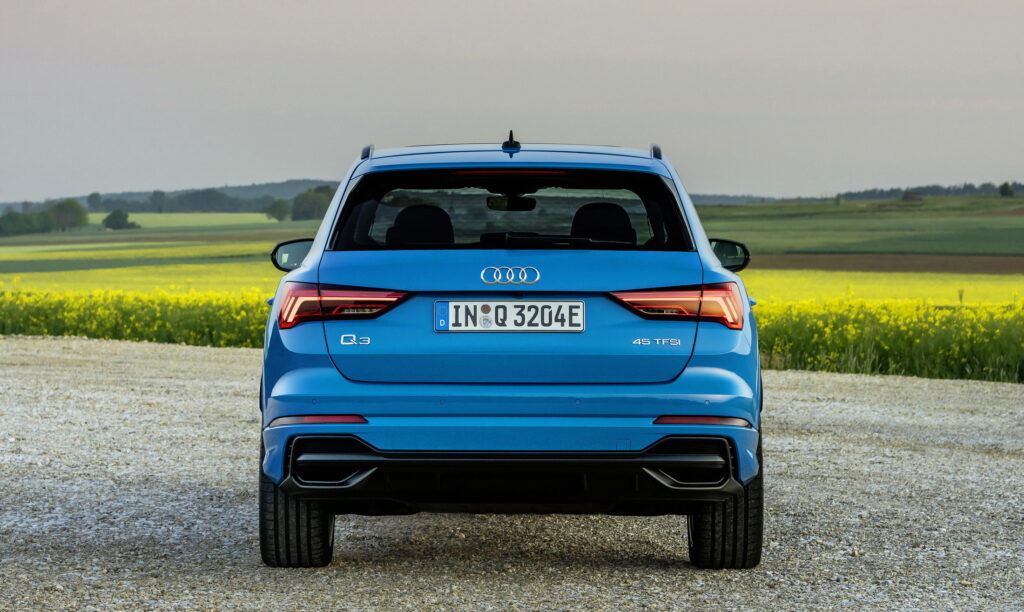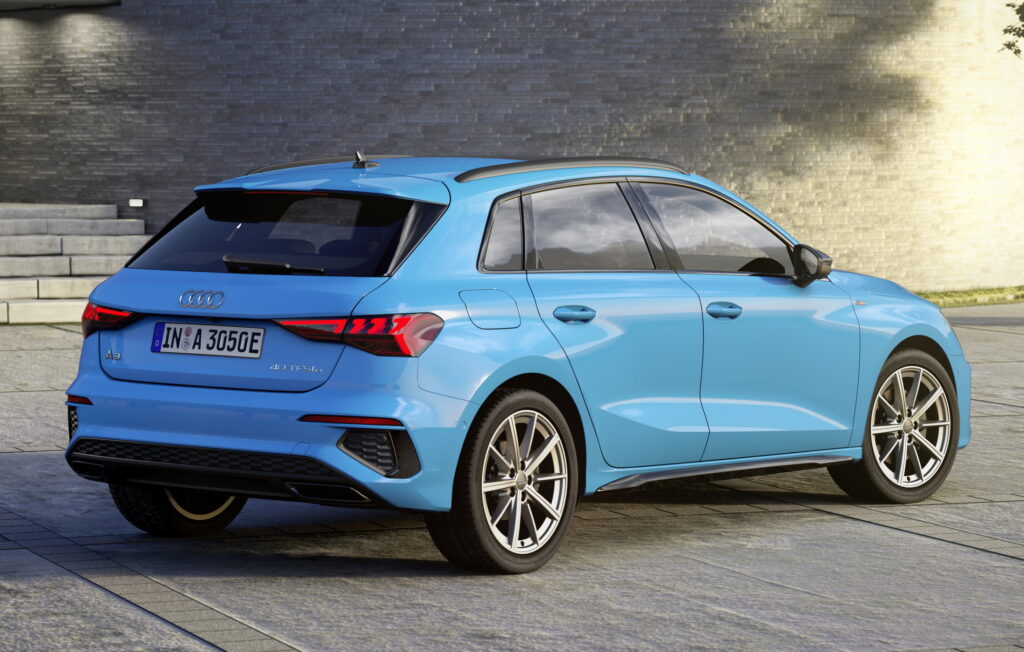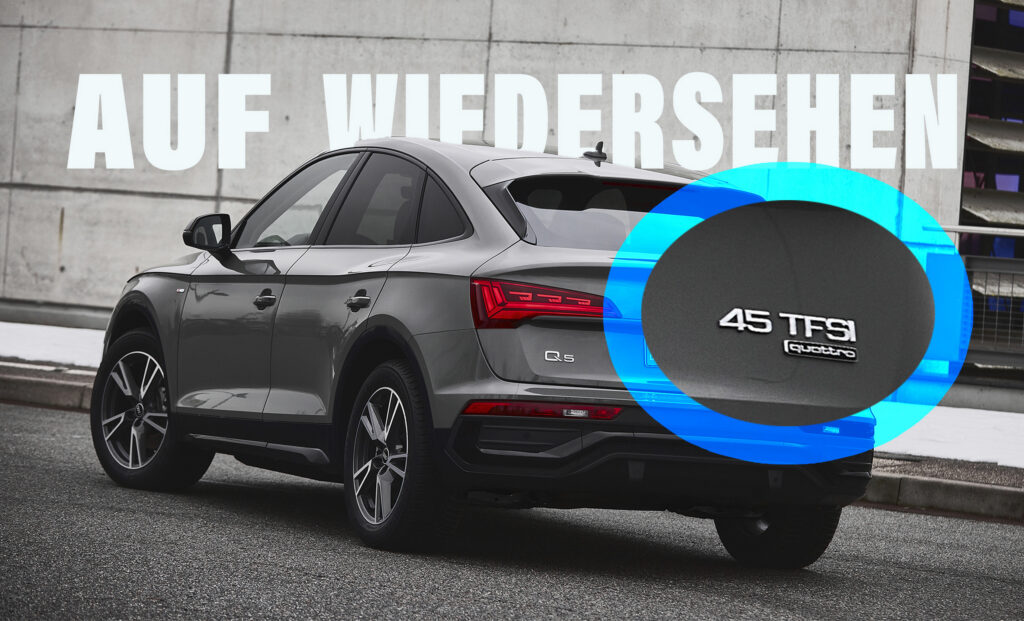The debut of the new Q6 e-tron not only heralds the dawn of Audi’s next generation of electric vehicles, but it also signals yet another shift in the brand’s naming conventions. Beyond the use of odd numbers for ICE models (like the Q5) and even for EVs (such as the Q6), the German automaker will now forgo numerical appendages used to distinguish between powertrains.
In 2017, Audi started adding two-digit numbers to the end of some vehicles’ names. For instance, the Q3 with the 2.0-liter engine that makes 184 hp (137 kW/187 PS) has the “40 TFSI” appended to its name. Meanwhile, the more powerful variant producing 228 hp (170 kW/231 PS) bears the “45 TFSI” designation.
The numeric designations are gradually disappearing from Audi’s lineup, largely due to the increasing presence of electric vehicles. According to a report from Auto Express, the Q8 e-tron was one of the first models to eliminate the numerical suffix from its trunk lid – though as pointed out by Autoblog, Audi did not follow this practice in the USA.
However, these numbers still appear on sales documents. With the introduction of the Q6 e-tron, Audi will completely abandon this naming convention.
Read: Audi Overhauling Naming Scheme With Odd Numbers For ICE, Even For EVs

According to Florian Hauser, Audi’s head of sales and marketing for electric vehicles, the brand will still be able to differentiate between front-wheel-drive and all-wheel-drive vehicles with the “quattro” name. And it can lean on prefixes to differentiate between more and less powerful vehicles.
“If it’s a performance model with quattro, then it’s ‘SQ6.’” said Hauser. “For smaller and bigger batteries we could think about a suffix behind the ‘6’ — for example ‘Performance.’ And so we don’t need the numbers anymore, so we won’t show them.”
By doing so, Hauser said that Audi can simplify things for its owners. And it won’t just be EVs that are dropping the numbers. The company is working to figure out how best to end the naming convention in its internal combustion vehicles, too.
While they will definitely disappear from the backs of the vehicles, it is not yet clear if they will also disappear from the order sheets. What purpose they serve, even behind the scenes, is unclear.
As the report highlights, the numbers are only tenuously linked to power outputs, which is what they’re supposed to represent. For example, the number 30 can signify anywhere from 109 hp to 128 hp (81 kW – 95 kW / 110 PS – 130 PS) while the number 45 can be used for anything from 226 hp to 248 hp (168 kW – 185 kW /229 PS – 251 PS).





